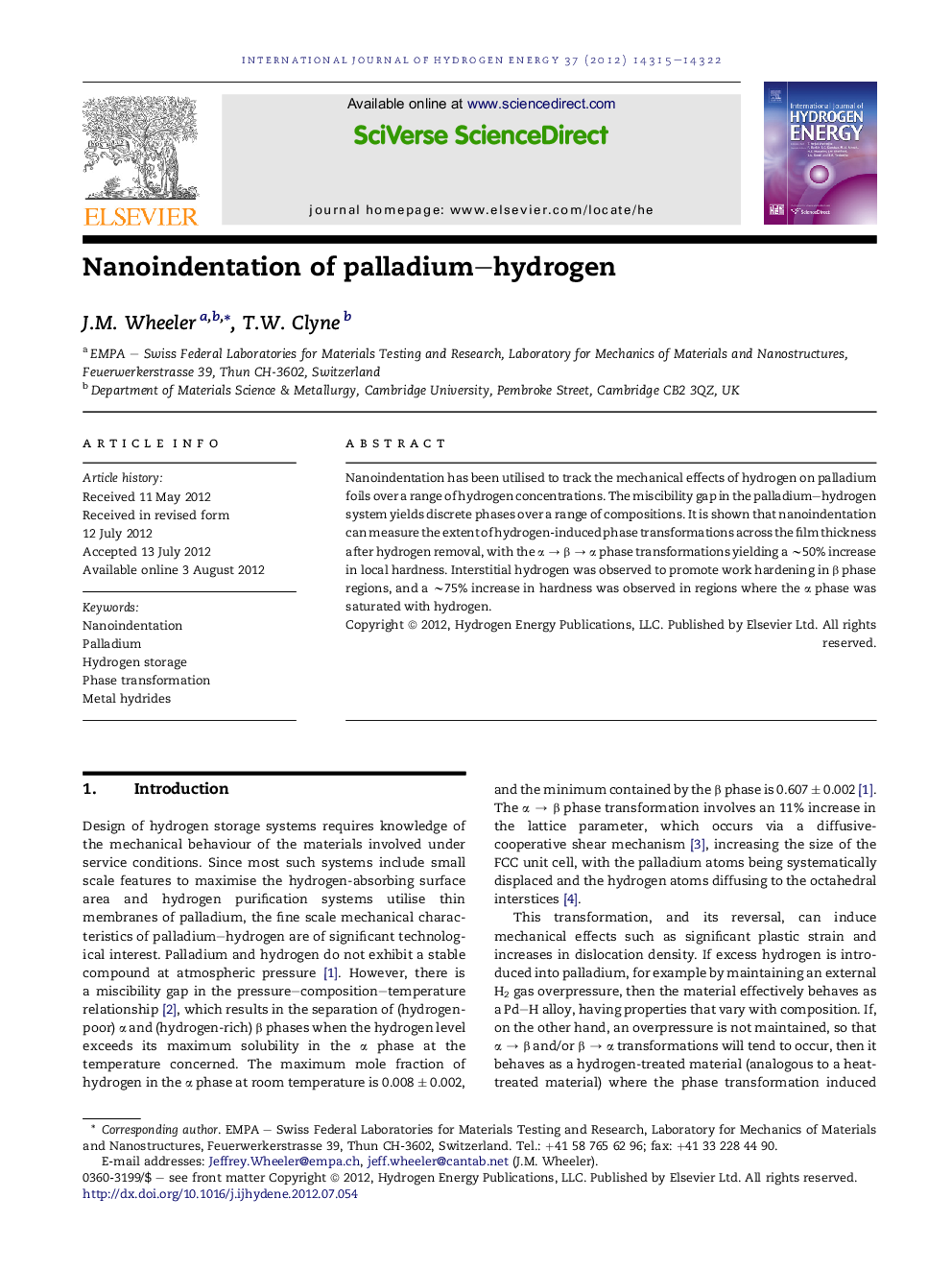| Article ID | Journal | Published Year | Pages | File Type |
|---|---|---|---|---|
| 1274778 | International Journal of Hydrogen Energy | 2012 | 8 Pages |
Nanoindentation has been utilised to track the mechanical effects of hydrogen on palladium foils over a range of hydrogen concentrations. The miscibility gap in the palladium–hydrogen system yields discrete phases over a range of compositions. It is shown that nanoindentation can measure the extent of hydrogen-induced phase transformations across the film thickness after hydrogen removal, with the α → β → α phase transformations yielding a ∼50% increase in local hardness. Interstitial hydrogen was observed to promote work hardening in β phase regions, and a ∼75% increase in hardness was observed in regions where the α phase was saturated with hydrogen.
► Single phase samples, α or β, show uniform hardness across the sample thickness. ► Partially hydrided samples, α & β phases, show discrete regions of differing hardness. ► Regions where α phase was saturated with hydrogen showed a ∼75% increase in hardness. ► Regions experiencing α → β → α phase transformations showed a ∼50% increase hardness.
